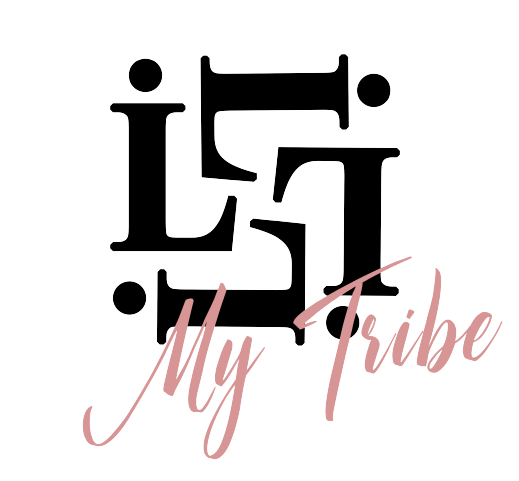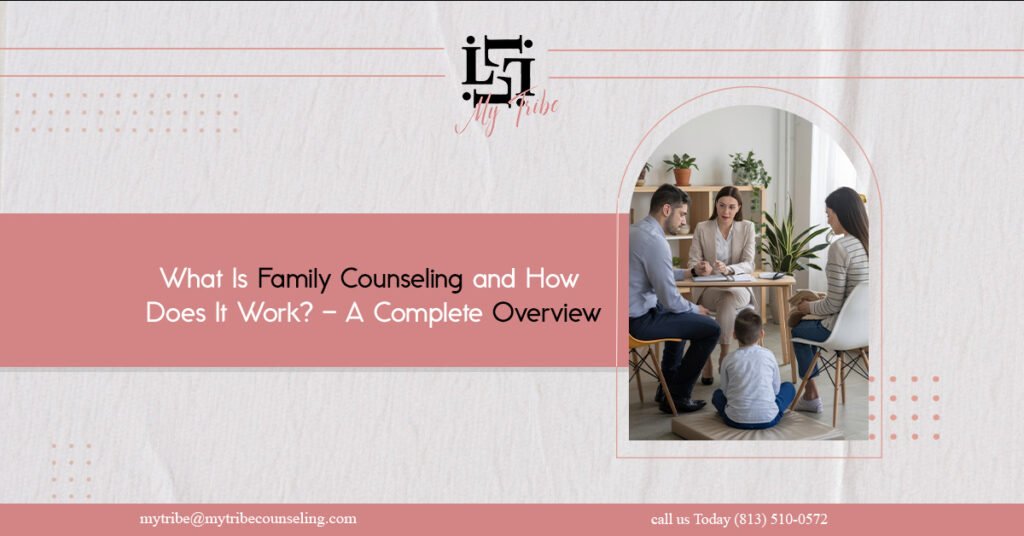The way a family functions has a profound impact on the health and happiness of each member. When dialogue breaks down and disputes intensify, many households feel a heavy strain that disrupts everyday life and threatens long‑term bonds. Family counseling provides a structured, professional setting for tackling these difficulties and enhancing overall family dynamics.
Family counseling, also called family therapy, is a specialized branch of psychotherapy aimed at helping relatives resolve disagreements, boost communication, and reinforce their connections. This therapeutic method has proven effective for a broad spectrum of family concerns, ranging from routine communication snags to more intricate problems such as divorce, mental‑health challenges, and behavioral difficulties.
Understanding Family Counseling: Definition and Core Principles
Family counseling is a form of psychotherapy that treats the family as a single, interconnected system instead of focusing on isolated individuals. The premise is that family members are linked, so a shift in one person’s behavior or emotional state can ripple through the entire system.
The theoretical roots of family counseling stem from systems theory, with major contributions from pioneers such as Murray Bowen and Virginia Satir. Bowen’s family systems theory highlights multigenerational patterns and emotional processes within families, while Satir emphasized communication styles, self‑esteem, and the family’s influence on personal development.
Key principles of family counseling
- Systems Viewpoint: Issues are examined within the family system, recognizing that each member both shapes and is shaped by family dynamics.
- Circular Causality: Problems are seen as sustained by reciprocal interactions among members, rather than simple cause‑and‑effect chains.
- Strengths‑Based Focus: Therapy seeks to uncover and utilize the family’s existing strengths, resources, and positive interaction patterns.
- Cultural Sensitivity: Therapists honor and incorporate the diverse structures, values, and cultural backgrounds that inform each family’s experience.
How Family Counseling Differs from Individual Therapy
- Individual therapy concentrates on a person’s inner world—thoughts, feelings, and personal history—whereas family counseling centers on relational patterns and the ways members interact with one another.
Main distinctions
- Treatment Focus: Individual therapy targets personal symptoms and internal psychological processes. Family counseling addresses interactional patterns, communication dynamics, and the overall health of the family system.
- Therapeutic Objectives: The goal of individual work often involves personal insight, symptom relief, and behavioral change for a single client. Family counseling aims to improve relationship quality, enhance communication, and modify systemic patterns.
- Session Structure: Individual therapy consists of one‑on‑one meetings. Family counseling typically involves joint sessions with multiple relatives present, collaborating toward shared goals.
Common Misconceptions About Family Counseling
Several myths can discourage families from seeking the help they need.
| Myth | Reality |
| 1. It’s only for severely “dysfunctional” families. | Any family dealing with communication hurdles, life changes, or relational stress can benefit, regardless of severity. |
| 2. The therapist will blame one person. | Skilled family therapists focus on interactional patterns and systemic dynamics, not on assigning blame. |
| 3. Children shouldn’t be part of the sessions. | Age‑appropriate inclusion of children often yields better outcomes and promotes family cohesion. |
| 4. It’s prohibitively expensive and time‑consuming. | Many insurance plans cover family therapy; community clinics and sliding‑scale fees make it more affordable. |
The Family Counseling Process
Initial Assessment and Goal Setting
The therapeutic journey starts with a thorough assessment. The therapist collects information about the family’s background, current concerns, and each member’s perspective. This first stage typically includes:
Intake: Separate interviews to capture various viewpoints, a review of family history and major life events, and an evaluation of present strengths and resources.
Goal Formation: The therapist collaborates with the family to set clear, measurable objectives—such as enhancing communication, resolving conflicts, establishing healthy boundaries, and deepening emotional ties.
Evidence‑Based Techniques Used in Family Therapy
Family therapists draw from a toolbox of research‑supported interventions, customizing their approach to each family’s unique needs. Common methods include:
- Structural Interventions: Adjusting family hierarchies, clarifying boundaries between subsystems (e.g., parents vs. children), and using role‑play during sessions to map and reshape interactions.
- Communication Training: Teaching active listening, offering conflict‑resolution skills, and coaching members on expressing emotions constructively.
- Behavioral Strategies: Creating contingency plans, assigning practical homework, and rehearsing new behaviors in session.
- Cognitive Approaches: Reframing negative thoughts, challenging dysfunctional beliefs, and facilitating exercises that encourage perspective‑taking among relatives.
Typical Session Flow and Duration
A standard family counseling session often follows this pattern:
Check‑in: Review of events and issues since the last meeting.
Therapeutic Work: Execution of targeted interventions and skill‑building activities.
Summary: Highlight key insights and assign relevant homework.
Planning: Set the agenda for the next appointment.
Sessions usually occur weekly or every other week, lasting between 50 and 90 minutes. A common course of treatment ranges from 12 to 20 sessions, though the length varies based on goals and the complexity of concerns.
Types of Family Counseling Models
Structural Family Therapy
Created by Salvador Minuchin, this model centers on reorganizing the family’s structure to promote healthier functioning. It examines hierarchy, subsystems (e.g., spousal, sibling), and the implicit rules governing interactions. It is especially effective for families facing child behavior problems or overly enmeshed relationships.
Strategic Family Therapy
Developed by Jay Haley and Cloe Madanes, strategic therapy adopts a problem‑solving stance that employs direct, focused interventions to alter specific behaviors. This brief, solution‑oriented approach is therapist‑directed and aims to interrupt maladaptive interaction cycles, making it suitable for acute behavioral issues or crises that need swift resolution.
Narrative Family Therapy
Pioneered by Michael White and David Epston, narrative therapy assists families in re‑authoring their stories. It involves externalizing the problem (separating it from the person), uncovering “unique outcomes” where the problem was absent, and co‑creating empowering new narratives. This approach is valuable for families dealing with trauma, stigma, or identity challenges.
Additional Specialized Models
Emotionally Focused Family Therapy (EFFT): Emphasizes strengthening attachment bonds and improving emotional expression within the family.
Solution‑Focused Brief Therapy (SFBT): Highlights existing strengths and past successes to generate solutions.
Multisystemic Therapy (MST): An intensive model for adolescents with serious behavioral difficulties that engages multiple systems—family, school, community.
The Benefits of Family Counseling
Enhanced Communication and Relationship Quality
Family counseling creates a safe space where members can practice healthier ways of interacting. Research shows that families in therapy demonstrate significant gains in active listening, emotional expression, and conflict‑resolution abilities, which translate into stronger bonds and higher relationship satisfaction.
Resolution of Specific Family Concerns
Family therapy effectively addresses a wide array of issues, including:
- Parenting Challenges: Inconsistent discipline, parent‑child conflict, and difficulties in blended families.
- Life Transitions: Divorce, separation, relocation, or welcoming a new family member.
- Mental‑Health and Behavioral Problems: Childhood conduct disorders, substance misuse, and the broader impact of a member’s mental illness on the family system.
Long‑Term Mental‑Health Advantages
The positive impact of family counseling goes beyond immediate problem-solving. Studies indicate lasting benefits for both individuals and the family unit, such as:
- Individual Gains: Reduced symptoms of anxiety or depression, improved coping skills, and a stronger sense of personal agency.
- Family‑Wide Outcomes: More resilient family structures, healthier communication patterns, and a greater capacity to navigate future stressors together.
- When to Consider Family Counseling
Signs Your Family May Need Professional Support
Seek assistance when you notice ongoing patterns of strain. Key red flags include:
Frequent arguments that keep escalating.
A breakdown in communication or long stretches of silence.
A major life change—such as divorce, bereavement, or a move—is creating tension.
A family member’s mental health or behavioral concerns that impact everyone.
A pervasive sense of distance or resentment among relatives.
Breaking Down Barriers to Getting Help
Stigma, worries about cost, and fear of exposing vulnerability can keep families from pursuing therapy. Yet reaching out for professional help demonstrates strength and a proactive commitment to the family’s well-being. Starting a conversation about counseling within the family can be the first step toward normalizing the process.
How to Locate a Qualified Family Therapist
Credentials to Check
It’s essential to find a licensed practitioner with specialized training in family therapy. Look for designations such as Licensed Marriage and Family Therapist (LMFT) and ask about their experience with issues similar to yours.
Steps for Choosing a Therapist
- Use Trusted Directories: Websites like the American Association for Marriage and Family Therapy (AAMFT) and Psychology Today host searchable listings of vetted therapists.
- Ask for Referrals: Get recommendations from reliable sources, such as your primary‑care doctor or trusted friends.
- Schedule Introductory Sessions: Most therapists provide a brief initial meeting, giving you a chance to see if their style and personality mesh with your family’s needs.
Cost, Insurance, and Accessibility
Many health‑insurance plans cover family therapy. Community mental‑health centers often offer sliding‑scale fees based on income. The growth of teletherapy has also broadened access, delivering a convenient and effective alternative to face‑to‑face sessions.
Conclusion
Family counseling delivers a practical, evidence‑based method for tackling the complex challenges that can upset family life. By viewing the family as an interconnected system, this therapeutic approach enhances communication, resolves disputes, and strengthens the family’s resilience and cohesion.
Every family encounters difficulties, but chronic conflict and emotional distance need not be the norm. If your family is dealing with ongoing distress, navigating a tough life transition, or struggling to reconnect, family counseling can provide a pathway to healing and positive change. Taking the first step to seek help is an investment in your family’s long‑term health and happiness.

